Unbeknownst to most, there is a side of the city that exists in silence, hidden behind closed doors. It is a world of artists — legacies of culture and talent that contain the essence of Guangdong and its colorful past. Steadfast in their mission, these rare inheritors fight to preserve a fading tapestry of knowledge passed down for millennia. From the finest puppet designer in the nation to the youngest professional lion dancer, Guangdong is home to artists working in over 70 different arts, crafts and culinary traditions that comprise its rich intangible cultural heritage. Hear their stories in the accounts that follow and peer into the artistic golden age of southern China before it vanishes forever.
Lingnan Puppetry 岭南木偶
Hanging by a string
 If you thought puppetry began and ended with the Muppets, think again. With its frequently paraded 5,000-year history, China often steals the show when it comes to housing origins of traditional art forms, and puppetry is no exception.
If you thought puppetry began and ended with the Muppets, think again. With its frequently paraded 5,000-year history, China often steals the show when it comes to housing origins of traditional art forms, and puppetry is no exception.
The earliest records of carved wooden mannequins date back to the Zhou Dynasty (1046–256 BC), while movable puppets emerged a bit later, in the Han Dynasty (206 BC-220 AD). Back then, people believed these tiny, human-like dolls could transcend the space between mortals, gods and ghosts. Puppet troupes were thus often called to perform at funerals, festivals or even house parties, making the art an odd sort of supernatural service that had little connection to the theater.
Fast-forward to the 20th century, however, and the role of puppetry looks less superstitious and more political. Zhang Shoushan, one of the greatest puppeteers of his time, first used puppet shows to recruit members to the Communist party in the years leading up to the civil war. By the 1950s, a desire to make art more accessible to the masses encouraged China to study techniques from abroad, prompting an invitation to a handful of experts from Eastern Europe to come to Beijing and share their approach. The decade proved crucial for puppetry’s development, as China transformed its age-old heritage from a stale expression to a thrilling, cosmopolitan performance.
In April of 1956, the Guangdong Province Puppet Art Theater was officially established, reflecting a widespread emphasis on the role of the arts in general. Riding the wave of modernized dramatization, the troupe’s first play, Hibiscus Fairies (芙蓉仙子), was instantly a national hit. With hired actors from Beijing, lighter models made of paper, high-tech stage lights and a comprehensive set, this was Chinese puppetry like it had never been seen before. It didn’t take long before Hibiscus Fairies made its way onto the big screen as the world’s first color puppet film in 1957, with support from the Great Wall Film Studio of Hong Kong.
Since then, the success of the ensemble has largely resulted from its willingness to swim against the current. When the majority of Chinese puppet troupes abandoned their traditional techniques to follow international aesthetic standards in the 1980s, Guangdong held its ground. Today, the province’s intricate dolls are the only remaining example of authentic Chinese puppetry, with clear links to local regions, most notably Shiwan, Foshan.
“If you don’t have your own style, you’ve lost your standing,” explains He Weichao, a designer at the Guangdong Province Puppet Art Theater, who has crafted highly popular puppets for the past 40 years. His work is consistently selected to represent all of China at the Union Internationale de la Marionnette (UNIMA) in Prague.
In 2001, Bart Roccoberton, Jr., Professor of Puppet Arts at the University of Connecticut, visited Guangdong as part of his research in the field. Despite his prior familiarity with Chinese puppetry after co-creating an original US-China puppet television show, The Adventures of Hua Hua and Morley, in 1994, Roccoberton was still captivated by He’s handiwork and praised the troupe for its distinctive style and modern storytelling.
Today, the Guangdong Province Puppet Art Theater holds regular weekend shows and even performs worldwide, though it struggles to recruit dedicated puppeteers who are willing to carry on the legacy. “Kids come and go these days,” sighs Cui Keqin, an actor who joined the group in the 1970s. Cui is now in his 60s, but only has one student capable of becoming an inheritor of his skills. Even fourth or fifth generation puppeteers lack the focus of their predecessors and often choose more mainstream careers in dancing, acting or acrobatics.
Like many of Guangdong’s intangible cultural heritages, few can say for sure how puppetry will fare among generations to come. For now, though, the Guangdong puppet ensemble continues to perform, hoping that one day, the eyes of a little girl or boy in the audience will widen the same way theirs did years ago and thousands have before.
// Visit the Guangdong Province Puppet Art Theatre at 43-51 Hongde Lu (next to Renmin Qiao), Haizhu District, Guangzhou 广州市海珠区洪德路43-51号广东省木偶艺术剧院 (近人民桥) (020-8431 0235, 8431 0227, www.gdmuou.cn). Book tickets on www.dianping.com or purchase at the door.
Lingnan Guqin 岭南古琴
Fly away on my zither
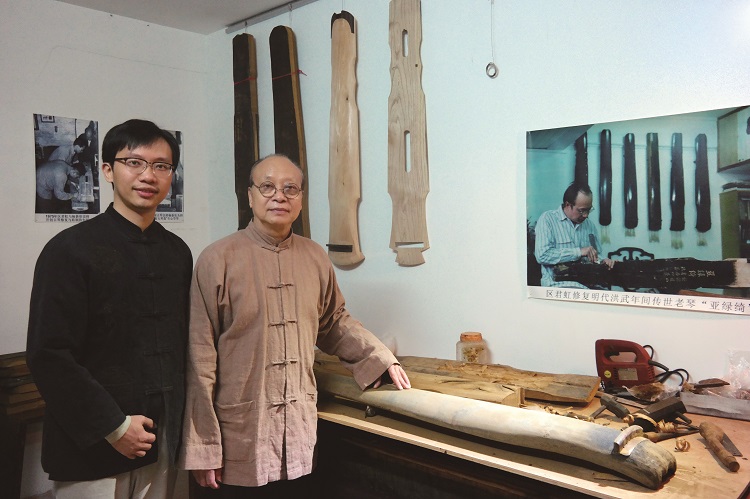
Considering its name literally means ‘ancient musical instrument,’ it’s no surprise that the guqin has been around for at least three millennia – though some claim it’s been around since the dawn of China’s first (legendary) dynasty, the Xia. Over time, many different branches have evolved, each subtly distinguished by slowly evolving regional differences and strong masters who instilled a distinct ethos on their students.
Like many artistic disciplines that grew great in the south, guqin initially came from the north. During the dying days of the Southern Song Dynasty, the last emperor of the period fled to the Pearl River Delta to escape the invading Mongol hordes. As he moved, he brought with him the trappings of court, including the guqin, sowing the seeds of its future glory in the region. Over time, these seeds sprouted into the Lingnan School that dominates Guangdong today.
“The biggest characteristic of Lingnan guqin is being strong in playing, like when you do martial arts,” explains Ou Junhong, an experienced guqin performer who is also a skilled instrument-maker and teaches students. In the front room of his apartment sits a trio of zithers, bathed in sunlight from double glass doors, while in the back hides his workshop, where guqin in various states of assembly wait patiently to be given the finishing touches.
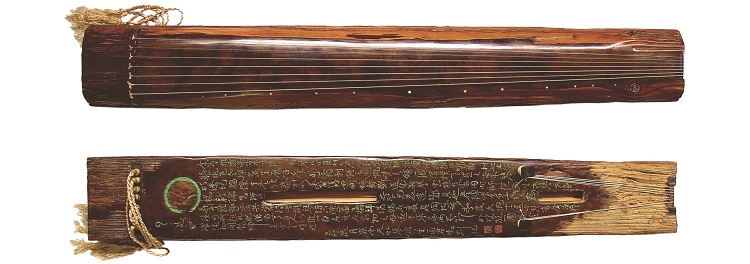
“My teacher was a kung fu master originally. He once watched a guqin performance and fell in love with the instrument,” continues Ou. “He fused kung fu into the playing of the guqin.”
In a very literal interpretation of this concept, guqin assassins cleave the head right off a man with their razor-sharp playing in the cult film Kung Fu Hustle. For a more nuanced example, however, there are actually DVDs of Ou demonstrating tai chi moves to guqin music, illustrating how martial arts elegantly pair with the plucking of the zither.
Just as interesting as performing on the guqin, however, is crafting the instrument. Sourcing the materials often proves the hardest part, since the wood should be at least 300 years old and not freshly chopped from a tree, but recycled from old buildings.
After acquiring a fine piece of wood comes the general shaping, followed by more intricate carving to transform the constituent pieces into a complete, smooth, svelte instrument. Next, the surface is painted to protect the material and give its surface a shiny sheen. Finally, the strings are attached. Traditionally, these were made from silk, though the past few decades have seen the delicate thread replaced by sturdy steel.
Since 2013, when the guqin was inscribed on UNESCO’s list of intangible culture heritages, the instrument has had something of a renaissance. In Guangzhou, Ou estimates there are around 2,000 people playing or learning, most of whom practice the locally dominant Lingnan style.
Straightforward, fierce and light. These are the three words Ou uses to describe the Lingnan School of guqin. Striking an equilibrium between the scholarly roots and the modern martial arts tenets, it is aggressive yet restrained, delicate yet striking, a distinctive southern spin on a northern tradition.
// A museum dedicated to the Lingnan guqin is located at Rm 920, Tower A, Daxin Bldg, 282 Daxin Lu, Yuexiu District 越秀区大新路282号大新大厦A座920 (www.tianhongqinguan.com)
Southern Lion 南狮
Wake the beast
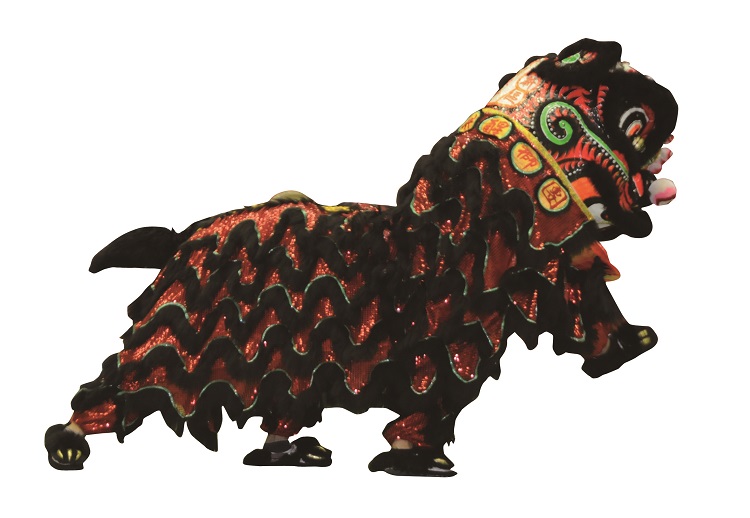 It's one of the most commonly seen Chinese folk arts worldwide, yet how did the lion dance come to be so popular when lions aren’t even native to China?
It's one of the most commonly seen Chinese folk arts worldwide, yet how did the lion dance come to be so popular when lions aren’t even native to China?
It wasn’t until the Han Dynasty (206 BC-220 AD) that emissaries from Central Asia and the Parthian Empire presented the feline species to the imperial court. Soon after, mimes hired by the royal family added dances mimicking lions’ movements to their repertoire, in addition to their routine performances as fish, dragons and phoenixes. These kinds of displays had been common since the Qin Dynasty (221-206 BC), when dancers wore bearskin masks to perform exorcism rituals.
By the time of the Song Dynasty (960-1279 AD), the lion dance was a common spectacle at festivals to expel demons and attract luck. The art even spread outside the Middle Kingdom, reaching the shores of Japan.
During its 2,000 years of evolution, the dance developed into two major genres: Northern Lion and Southern Lion. While the Northern Lion (北狮, bei shi) is said to be closest to the original form, Southern Lion (南狮, nan shi) is arguably the more widely seen.
Believed to have germinated in Guangdong Province between 907 and 979 AD, the Southern Lion, or seng si (醒狮) in Cantonese, is known for having a single horn on its head, which is made of papier-mache over a bamboo frame. More hairs are attached around the eyes and mouth, and there are usually no eyeballs on a new lion head. Southern Lion dancers start by asking influential guests to ‘dian jing’ (点睛) or ‘paint the eyeballs’ – a ceremony that usually takes place at night and is accompanied by incense and firecrackers.
Unlike the comparatively playful Northern Lion, the Southern Lion focuses on the fierceness of the animal and incorporates ‘ma bu’ (马步, ‘horse stance’), which is a primary skill in Chinese martial arts. According to 26-year-old Zhang Zikang, the youngest inheritor of nan shi, “One should spend at least four to five years practicing kung fu before attempting a lion dance. The more stable your ma bu, the better your lion dance will be.”
Zhang, who has studied and performed the Southern Lion for 16 years, claims that in addition to practicing technical skills, a pair of observant eyes is a must. “I used to spend hours watching a cat just to see how it reacts when it discovers food,” laughs Zhang.
A complete Southern Lion performance lasts for nearly one hour and consists of eight stages: chudong (出洞, step out of the cave), xunqing (寻青, look for food), tanqing (探青, probe for traps), qinqing (擒青, get the food), chiqing (吃青, eat the food), zuiqing (醉青, get full), tuqing (吐青, spit out the chewed food) and huidong (回洞, go back to the cave). The ‘food’ often comes in the form of a roll of lettuce, due to its symbolic pronunciation, ‘shengcai,’ which sounds like ‘make money’ in Chinese.
Traditionally performed on the ground, modern forms of Southern Lion dance are also played on stilts – two performers cooperate to leap from one stilt to another, all of different heights, in order to reach lettuce hung on the highest pole. Dangerous as it may be, stilt jumping is usually the most anticipated part of the whole show.
Despite being listed in one of the first batches of national-level intangible heritages in 2006, the Southern Lion is facing a challenging time. “The practice is hard and painful. Not many young people are willing to bear that pain. They would rather play on their iPads for hours than stand in the horse stance for 20 minutes,” says Zhang with a bitter smile.
To help promulgate his craft, Zhang is hired to teach children at the Guangzhou Intangible Cultural Heritage Protection Center once a week. In order to rouse kids’ interests, he has designed a variety of fun exercises to train their agility and response time. “Clearly, the training I used to have is not applicable to today’s children. Even tradition needs to change sometimes to adapt to reality.”
Guangcai 广彩
Coats of many colors
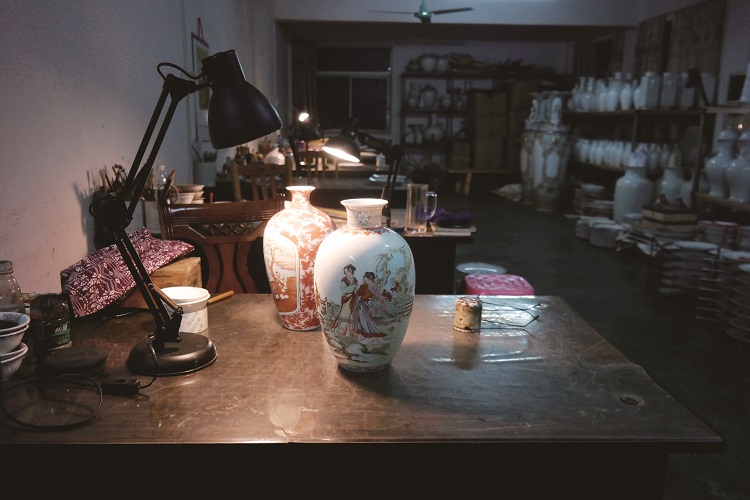
Whether the Chinese were actually the first people to create pottery is still hotly contested, but what isn’t under debate is that they were the ones to dream up porcelain, also commonly known as china.
Porcelain specifically refers to translucent white ceramics, as opposed to earthenware. So advanced were the Chinese in this particular field that firing and glazing techniques developed in the Middle Kingdom during the Han Dynasty (206 BC-220 AD) were still completely unique to the country hundreds of years later – they weren’t replicated in Europe until the early 1700s.
When the Qing Dynasty’s Kangxi Emperor opened up his realm to more maritime trade in the late 17th century, a greater number of decorative objects started to make their way to Europe. The increased availability of these objects, already admired for generations among the upper classes, initiated a craze for Chinoiserie.
At the time, foreigners in China were largely limited to select ports, one of the most notable of which was Guangzhou. Initially, traditionally patterned pottery flowed out through these coastal cities; for instance, the classic blue-and-white wares still prized today.
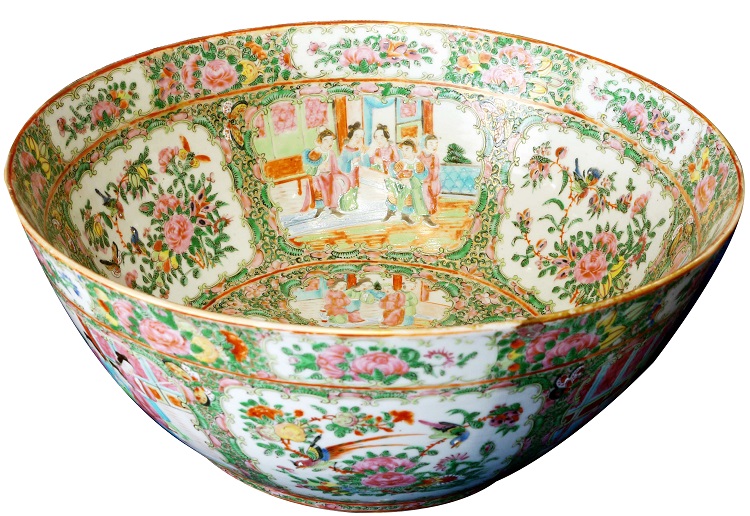 Seeing that Westerners were highly desirous of their thus-far inimitable porcelain, however, craftsmen along the Pearl River began to conceive designs specifically for this lucrative market, using Chinese talent to make bowls and plates that would appeal to foreign tastes. This was the origin of guangcai, which literally means ‘Guangzhou colors.’
Seeing that Westerners were highly desirous of their thus-far inimitable porcelain, however, craftsmen along the Pearl River began to conceive designs specifically for this lucrative market, using Chinese talent to make bowls and plates that would appeal to foreign tastes. This was the origin of guangcai, which literally means ‘Guangzhou colors.’
“Guangcai only refers to the painting of the pottery. It is unique for its fine brushstrokes (done with a needle) and for the gold implemented into the color,” explains Tan Guanghui, who has been practicing the skill since 1978, when he was apprenticed to the trade. Fast-forward to the present, he runs a two-story studio in Fangcun with his wife where people can go to try their own hand at embellishing ceramics.
“The Chinese domestic market is growing more interested in this type of art,” Tan adds. “Traditional arts in general are gaining respect among the educated and affluent.”
The use of gold paint in guangcai was at the heart of its historical popularity, along with the bright hues that give it its name. Like other high-quality pottery, the teacups, dishes and vases were all fired in the world-famous Jingdezhen kilns. They were then sent to Guangzhou where the glazing took place.
Artists in the south sought to please foreign palates. In fact, some of the earliest examples of guangcai from the 1700s are emblazoned with the coats of arms of the British, Portuguese and Swedish nobility. Presaging the contemporary Chinese ingenuity for imitation, there are even pieces of crockery with Christian and Greco-Roman themes, such as the Crucifixion and the Judgment of Paris.
“It is difficult to find the best pieces of guangcai from hundreds of years ago, because the best were all exported,” notes Tan. “Today, anyone who wishes to collect original pieces must travel to Europe and bring them back. European museums are loaded with guangcai; Chinese museums have few.”
Almost as soon as foreigners clapped their eyes on porcelain, they began to try to discover the secret to making it. Throughout the 1700s, a combination of espionage and experimentation meant more and more companies acquired the ability, including such prestigious brands as Meissen, Spode and Wedgewood. By the 1800s, Chinese porcelain was competing in Europe with home-made varieties, and while it was still a moneymaker, the profits had declined. So Guangzhou manufacturers looked to the United States and a less affluent clientele, leading to a notable change.
Whereas before guangcai products had been designed largely for aristocrats and the gentry, by the 1800s they were also being aimed at the American masses. As a result, the colors were more florid, the gold paint more heavily applied and the subjects became more quintessentially ‘oriental’ – meaning figures in Ming Dynasty dress and Chinese-style birds and flowers.
Much of the guangcai porcelain today adheres to the aesthetic changes of the 19th century, though the market has moved more towards the Middle East. Classic Chinese stories and mythology make up a significant proportion of designs, and the colors are vivid and bright. Unlike endangered intangible cultural heritages, several companies continue the tradition, because demand remains high. Though times have changed, the appetite for guangcai remains voracious.
// The Guangzhou Museum contains examples of guangcai throughout the centuries.
Jammy Chai Soy Sauce 致美斋
The seasoned king
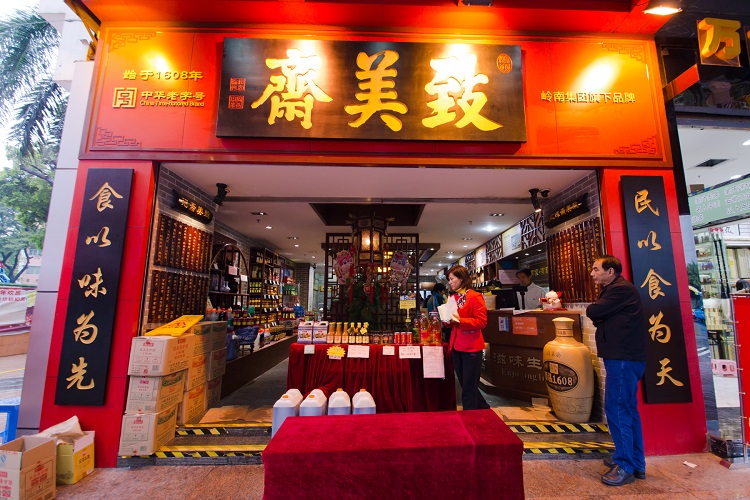 There is no doubt that Cantonese cuisine occupies a prominent place in the eight culinary traditions of China, but what’s good food without the condiments? Among all of the seasonings used in southern Chinese cuisine, soy sauce boasts the longest history and has received unmatched international acclaim.
There is no doubt that Cantonese cuisine occupies a prominent place in the eight culinary traditions of China, but what’s good food without the condiments? Among all of the seasonings used in southern Chinese cuisine, soy sauce boasts the longest history and has received unmatched international acclaim.
Originating in China 3,000 years ago, soy sauce evolved from jiang (酱), a meat-based, fermented dressing used by imperial chefs back in the day. Considered a tasty alternative to salt, which was expensive and rare in ancient China, it was known for its distinct flavor of umami and for adding color to the dishes. For most average households, however, wasting valuable meat to make sauce was unthinkable. Eventually, cooks mistakenly stumbled upon soybeans, which turned out to work as a perfect substitute, paving the way for the familiar recipe we know and love today.
In addition to soybeans, grains, brine, mold cultures and yeasts are also used to produce soy sauce. The process generally takes months to finish and begins by mixing boiled soybeans with roasted grains and a culture of Aspergillus spores, brewing, then pressing, before moving on to pasteurization and storage.
There are two basic forms of soy sauce in China: sheng chou (生抽) and lao chou (老抽). The former is thin and light, containing no additives, while the latter is relatively thick and dark, with added sweet or savory tastes. Differences not only lie in colors and textures. Sheng chou can be used during the cooking process or after as a dipping sauce, though its main function is for flavoring; lao chou, on the other hand, is usually added when sauteing to add color to the ingredients.
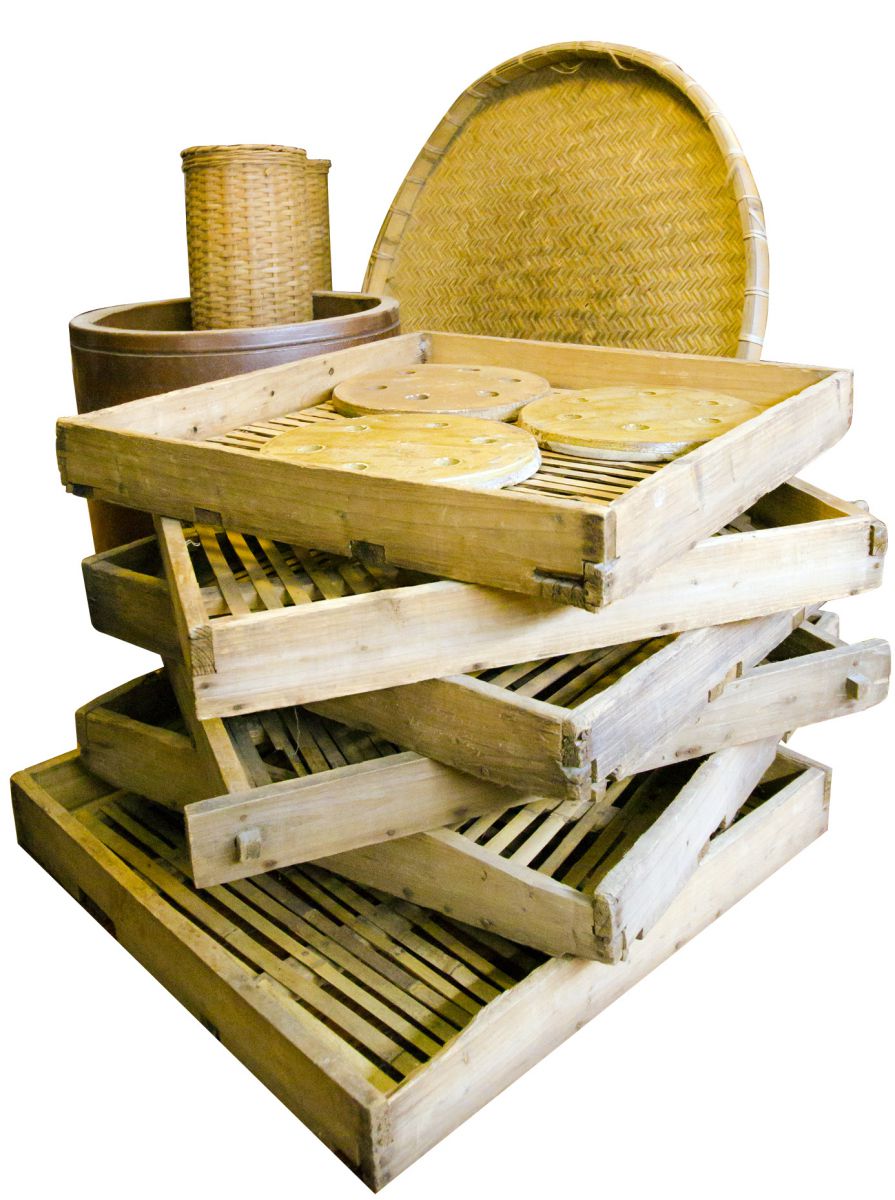 The widespread use of soy sauce in South China is closely related to Jammy Chai (致美斋), a time-honored brand over 400 years in the making. It evolved from a small breakfast shop on Zhongshan Si Lu in Guangzhou to become the largest name in sauce in Guangdong and one of the four most notable in China today.
The widespread use of soy sauce in South China is closely related to Jammy Chai (致美斋), a time-honored brand over 400 years in the making. It evolved from a small breakfast shop on Zhongshan Si Lu in Guangzhou to become the largest name in sauce in Guangdong and one of the four most notable in China today.
The best known product of Jammy Chai is Tianding Tou Chou (天顶头抽), listed under the sheng chou category and produced after the first pressing of soybean paste. As a result, Tou Chou is often called the XO brandy of soy sauce. According to noted Cantonese food critic Zhuang Chen, Tianding Tou Chou produced by Jammy Chai takes almost half a year to brew, and its superior taste is best used for dipping.
Jammy Chai has played an influential role in developing the soy sauce industry in southern China. The brand’s commitment to the skill is reflected in its complex production process, which begins with the selection of first-class, non-transgenic soybeans. The mixed paste is then roasted in the sun for at least 270 days in order to maximize its aroma and umami. Such devotion has assisted Jammy Chai in brewing a soy sauce that made the list of municipal-level intangible heritages in 2011 and rose to the provincial-level in 2012.
There are now more than 200 Jammy Chai shops in Guangzhou, selling everything from soy sauce to sesame oil, chili paste and oyster sauce. The oldest shop can be found on Zhongshan Si Lu and was restored five years ago to the elation of older Guangzhouers, who still peruse the aisles searching for that familiar scent from childhood.
As for Jammy Chai, its reputation continues to thrive, not only as an esteemed brand name, but also as a collective memory among all who pass through Guangzhou.
// Visit the oldest Jammy Chai store at Shop 101, 331-335 Zhongshan Si Lu, Yuexiu District, Guangzhou 广州市越秀区中山四路331-335号101铺 (020-8378 9024). A historic soy sauce museum is located on the second floor of the shop.
Lingnan Penjing 岭南盆景
Guiding a lifetime of branches
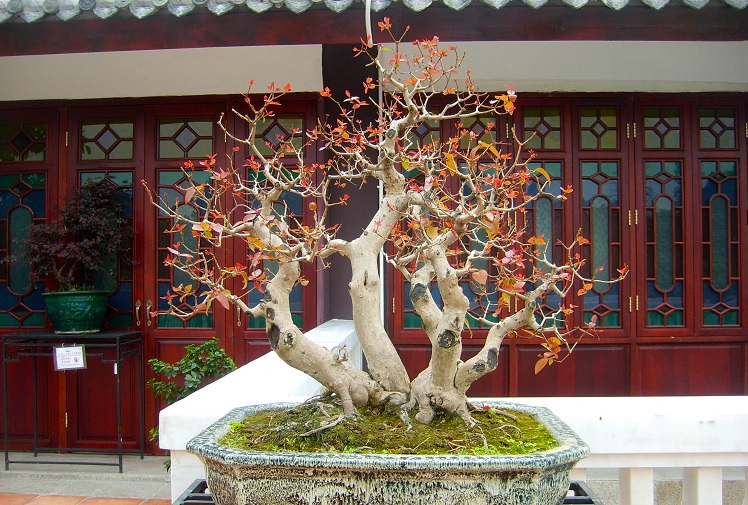 Few art forms require an artist to wait five long years before witnessing a trace of change in his or her creation, but that’s the standard for masters of Lingnan penjing, Guangdong’s oldest intangible cultural heritage with roots stretching back 7,000 years into, literally, the fourth layer of the Earth.
Few art forms require an artist to wait five long years before witnessing a trace of change in his or her creation, but that’s the standard for masters of Lingnan penjing, Guangdong’s oldest intangible cultural heritage with roots stretching back 7,000 years into, literally, the fourth layer of the Earth.
Frequently mistaken for Japanese bonsai, which actually came later, the art of pruning miniature trees began in China. Its true origin wasn’t revealed until 1978, however, when a historian found scrolls of paintings featuring penjing hidden underground in Jiangsu Province. The paintings were buried so far below our planet’s surface that they debunked a previous theory which had traced penjing back to the Western Han Dynasty, a mere 2,000 years ago.
Graceful yet striking, penjing challenges artists to spend decades patiently pruning a tree and guiding its branches into an elegant silhouette. Literally translated as ‘potted scenery,’ the art is entwined with principles of the Taoist tradition, acting as a portal for humans to access qi – a universal life energy said to be contained in the five elements of nature. Each miniaturized tree squeezes a grand landscape into one single pot, allowing artists to experience the great outdoors without stepping foot beyond their back patio.
Pruning is generally done during spring months, when a tree is in its strongest state. Most artists rely solely on clipping branches to direct growth in new directions and avoid using guy-wire as a shortcut. Even to Taoists, the process is not considered harmful – incisions are minimal and do not severely alter the tree’s natural development.
Cui Wenrui, one of half a dozen official penjing artists listed in Guangdong, has practiced the art consistently for the last 59 years, though his gallery near Haizhu Lake doesn’t take up much space. “Most trees need to be pruned for at least 30 years before they can even be entered in a competition,” says Cui. “Young people rarely have the patience.”
Indeed, while thousands of amateur horticulturalists in Guangzhou scramble to take home a penjing of their own from flower markets every Chinese New Year, the number of serious artists in the area can be counted on one hand. Most enthusiasts prune a tree for a few weeks before letting their attention slip elsewhere. Thus, ironically, the traditional art is technically in danger of fading, despite being ‘practiced’ by no small number of locals.
Even for Cui, who recently gained recognition as one of the region’s most experienced penjing practitioners, support remains minimal. This year, he was offered a total of RMB2,000 from the government for his efforts promoting Lingnan penjing as an artist and instructor. That’s not much considering he, like most, cannot bear to sell masterpieces that took nearly a lifetime to create.
Though it is now considered part of Guangdong’s intangible cultural heritage – partly to attract new students to the art – original Chinese penjing didn’t make its way south until a century ago, in the hands of businessmen from Jiangsu Province. Since that time, Lingnan penjing has gradually distinguished itself from northern styles, abandoning thick, ample branch patterns in favor of incorporating a wider variety of trees with thinner branches, which are possible to cultivate in the mild southern climate.
Today, Guangdong’s interpretation of original penjing is appreciated internationally. Specialty schools like the Lingnan Penjing Academy of Australia and the Institute of Lingnan Penjing, Hong Kong carry on the legacy of southern China’s unique art, encouraging youth to strive for the same patience and mindfulness that once granted unparalleled respect for Chinese penjing masters so many eras ago.
// To view Lingnan penjing, visit Cui Wenrui’s exhibit in Haizhu Lake Park, about a 10-minute walk straight from the main entrance (168 Xinkao Zhong Lu, Haizhu District 海珠区新滘中路168号海珠湖公园) or read about artist Phillipe Tot on Lingnan Penjing Academy of Australia’s website (www.penjing.com.au)
The Honorable Mentions
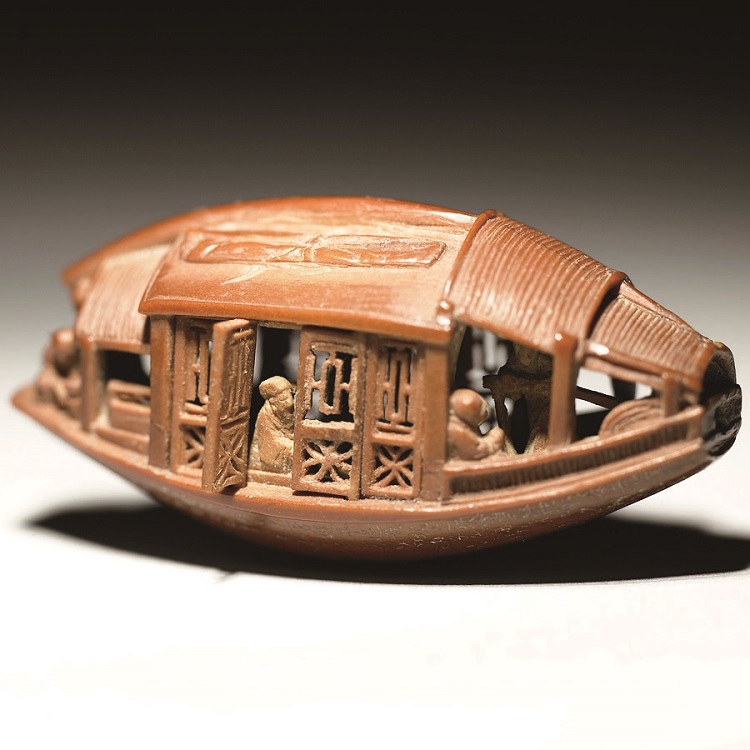 Guangdong olive core carving
Guangdong olive core carving
On the verge of extinction due to a scarcity of black olive trees in Guangdong and dwindling interest in the art, olive core carving largely exists as a marvel of the past. Today, artists often weave the carved pits into ornate bracelets or pendants.
Where to spot it: Inside Chen Clan Academy, 34 Enlong Li, Zhongshan Qi Lu, Liwan District, Guangzhou 广州市荔湾区中山七路恩龙里34号 (020-8181 7371)
Guangdong clay sculpture
An advanced take on papier-mache, Guangdong’s clay sculpture uses steel wire as a framework for exterior slaked lime, which is molded into complex designs. The hardened sculpture is then painted in vibrant colors and used to decorate rooftops or walls.
Where to spot it: On the roof of the Chen Clan Academy.
Mahogany palace lantern production
Joining the list of provincial-level intangible arts in 2010, mahogany palace lanterns originated in the Ming Dynasty (1368–1644) and contained 12 to 18 images on thin silk panels that could be viewed individually or as one combined story.
Where to spot it: Second-floor exhibit in Guangzhou Cultural Arts Center, 47 Yiyuan Lu, Xingang Zhong (across from T.I.T. Creative Industry Zone), Haizhu District, Guangzhou 广州市海珠区新港中艺苑路47号 (T.I.T. 创意园正对面) (136 1010 4432)
Fire dog dance
Originating as a festive dance of the Yao ethnic minority group, the custom stems from a belief that dogs symbolize regeneration. Young women from Lantian had to participate in the fire dog dance two to three times before they could marry and officially enter adulthood.
Where to spot it: Lantian Yao Style Park, Lantian Yao Ethnic Minority Village, 15 kilometers north of Longmen County, Huizhou 惠州市龙门县城以北15公里的蓝田瑶族乡龙门蓝田瑶族风情园
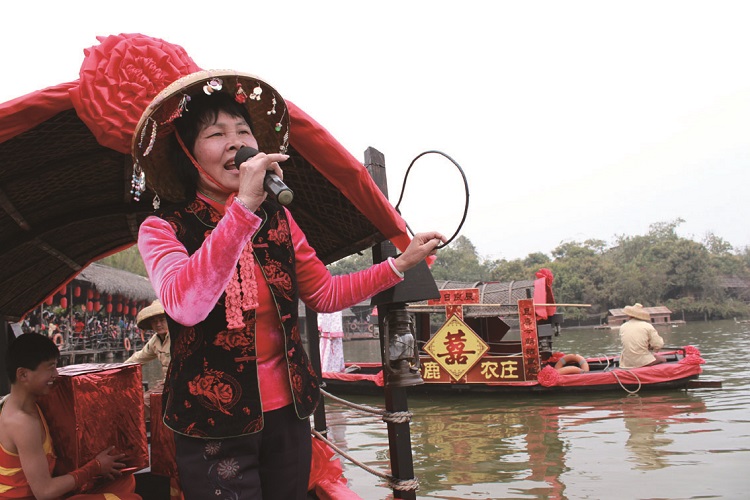 Guangzhou saltwater songs
Guangzhou saltwater songs
With over 600 years of history, this musical tradition features female vocalists standing on boats while singing. It can be traced back to the Tanka people – an ethnic subgroup in South China known for spending their entire lives out at sea.
Where to spot it: The Guangzhou Water Culture Festival, held annually in Nansha District from late September through mid October. Fengqing Jie, Shui Xiang, Dongchong Zhen, Nansha District, Guangzhou 广州市南沙区东涌镇水乡风情街广州水乡文化节
Shahe traditional rice noodles
Almost transparent in color, these savory noodles are made from rice flour and emerged over a hundred years ago in Shahe, now a part of Tianhe District. They are often stir-fried with beef, garlic and scallions.
Where to spot it: Any dim sum restaurant; Shahe Noodle Village, 157 Longjin Xi Lu, Liwan District, Guangzhou 广州市荔湾区龙津西路157号之一沙河粉村 (020-8103 6064)
Shawan buffalo milk snacks
Panyu District’s Shawan Village is famous for its ginger milk pudding, which is made by mixing buffalo milk with ginger juice and then beating it into a frothy consistency.
Where to spot it: Qinfangyuan Desserts, Shawan Ancient Village, 375 Zhonghua Dadao, Nancun Shawan, Panyu District, Guangzhou 广州市番禺区沙湾镇南村中华大道375号沁芳园甜品店 (020-8473 4873)
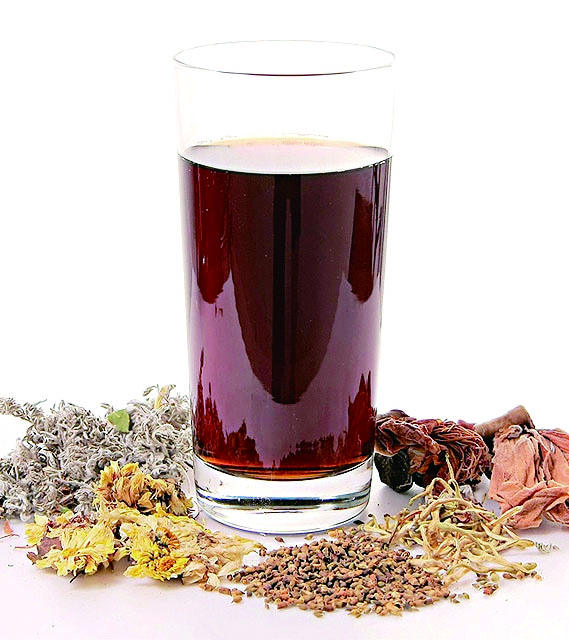 Cantonese herbal tea
Cantonese herbal tea
An irreplaceable health tonic for locals, bitter herbal tea dates back to 350 AD and contains expert combinations of Chinese medicinal herbs, dried flowers, roots and seeds to cool inner body heat, cure common colds or benefit overall health and immunity.
Where to spot it: Any herbal tea shop, including Huang Zhenlong, 32 Nonglin Xia Lu, Yuexiu District, Guangzhou 广州市越秀区农林下路32号之九 (农林下路店) 黄振龙凉茶店 (020-8760 3825)



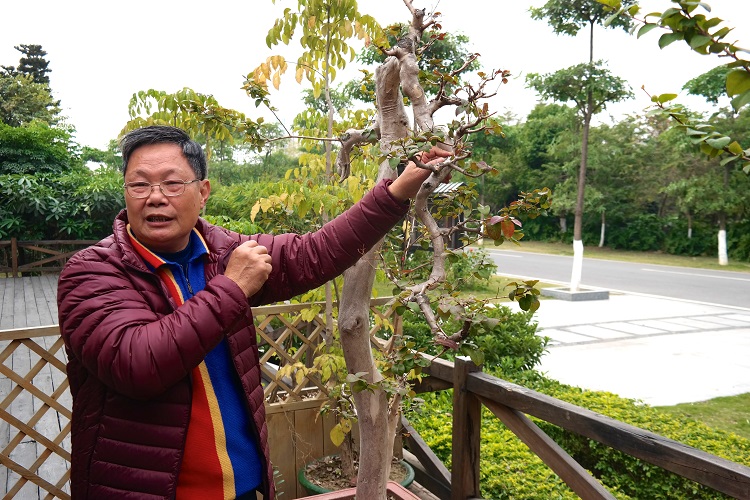


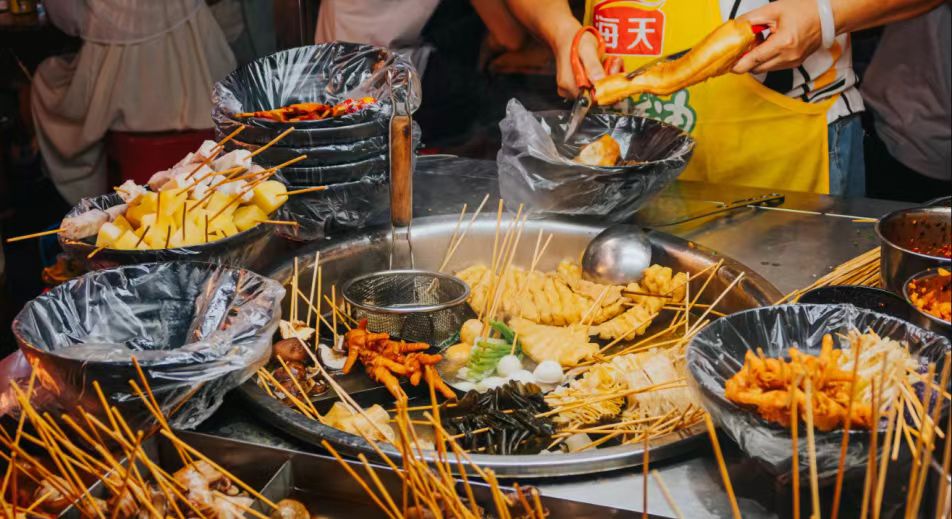













0 User Comments